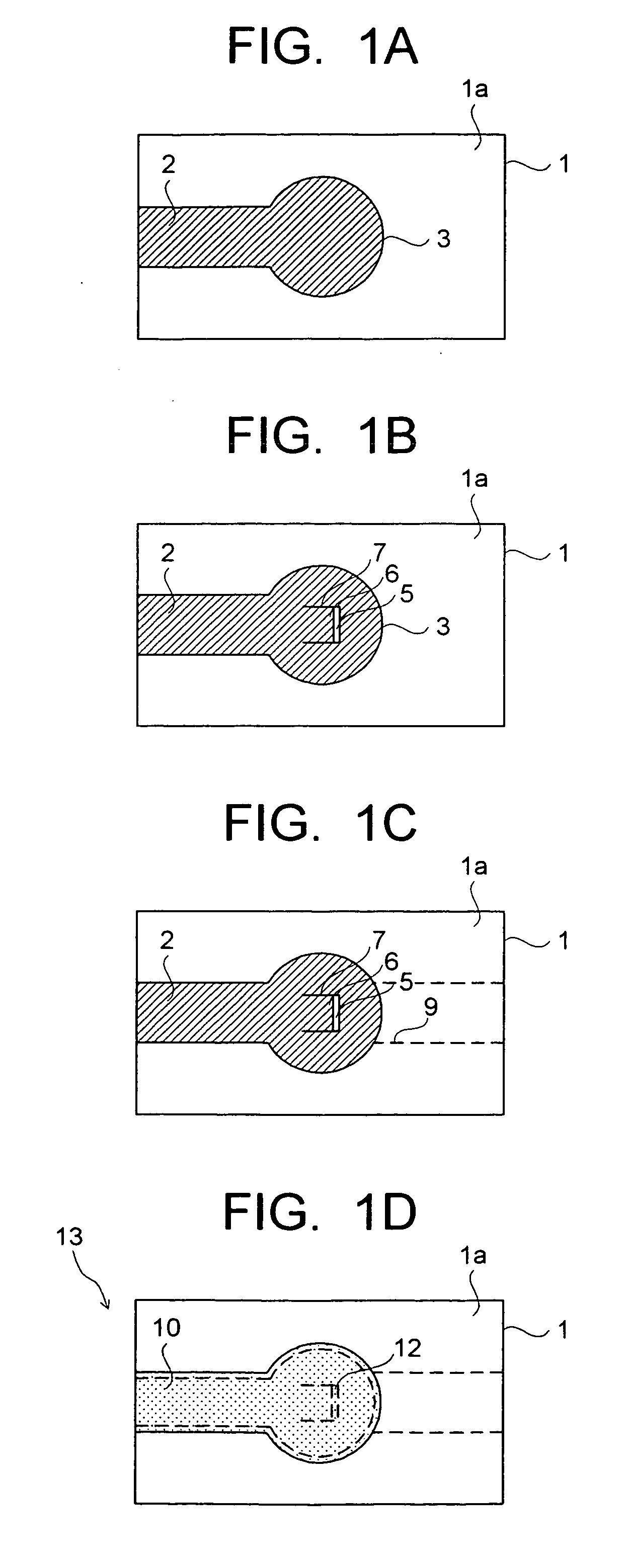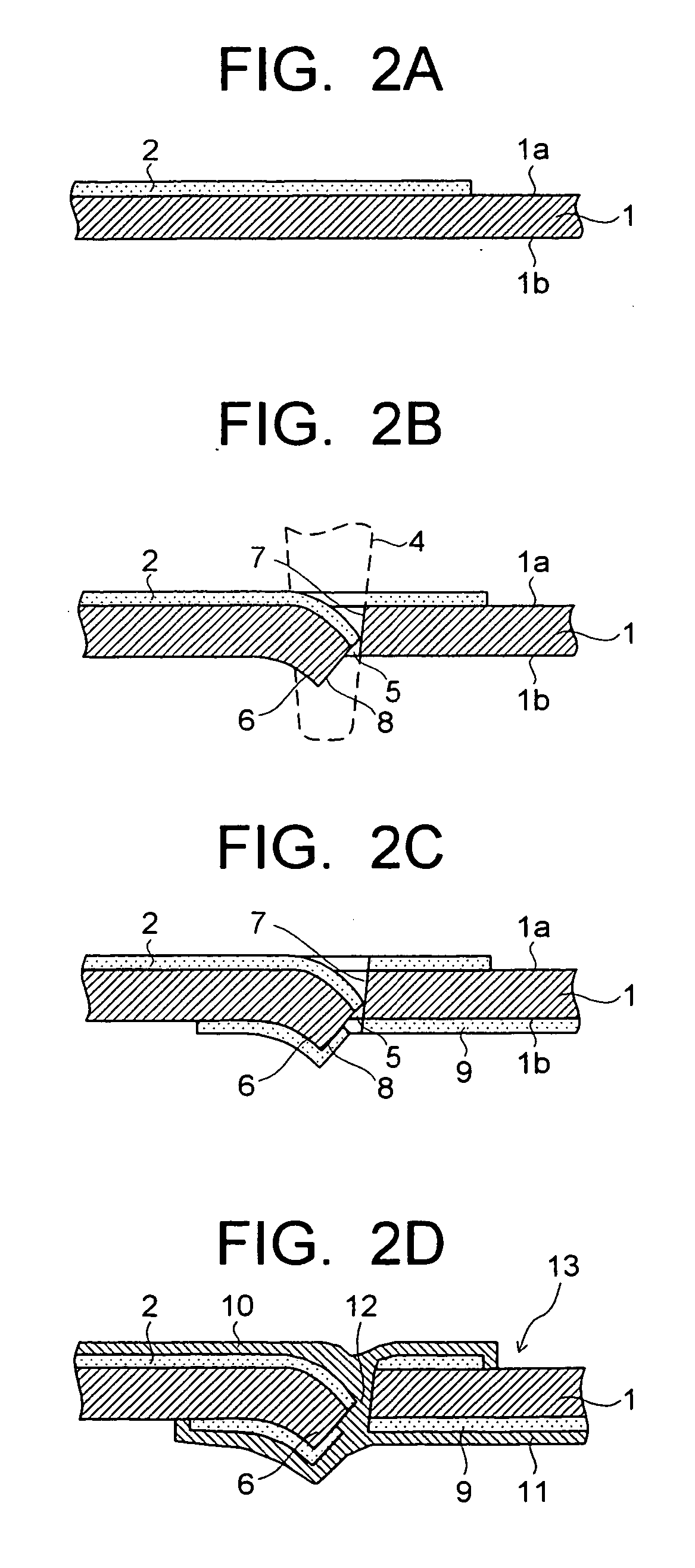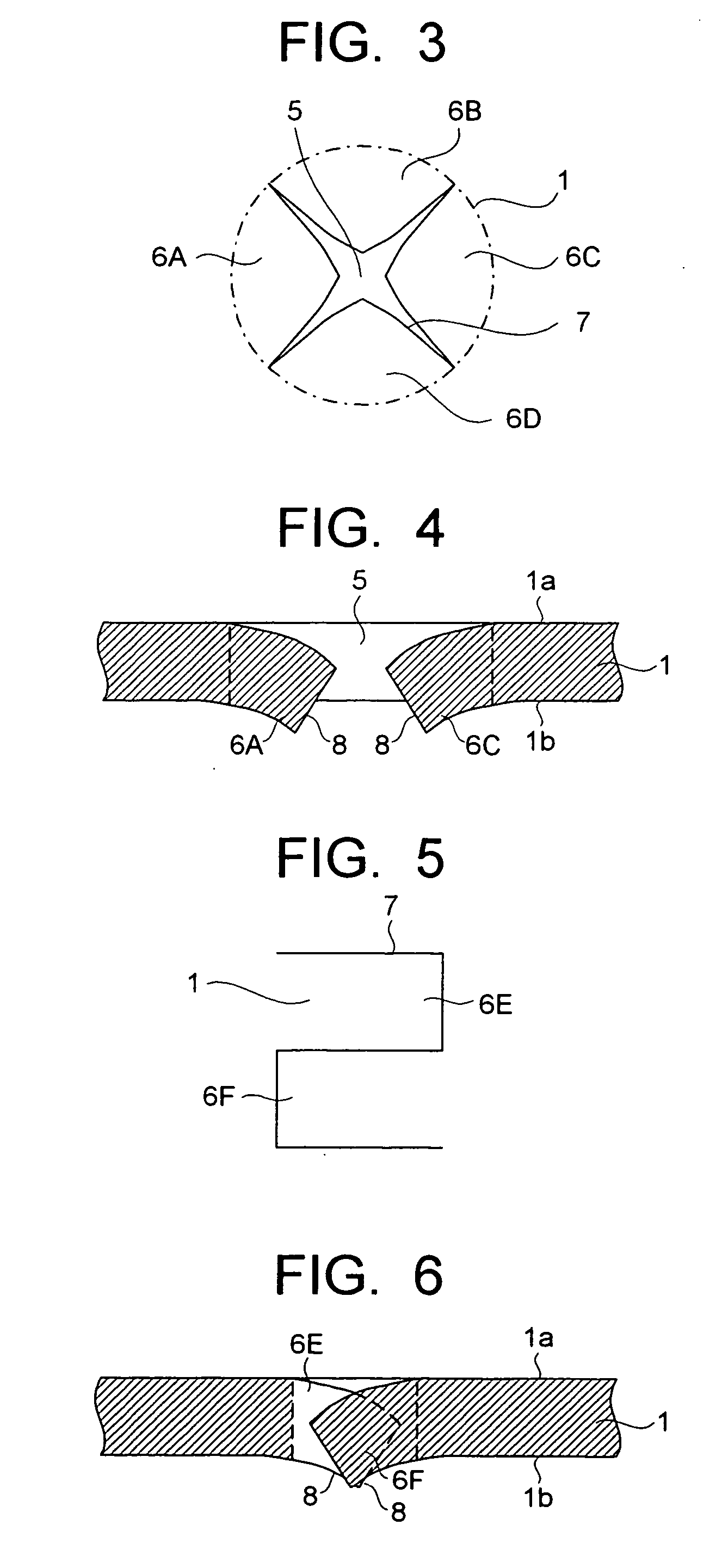Wiring substrate and manufacturing method thereof
a manufacturing method and wire substrate technology, applied in the field of wire substrates, can solve the problems of increasing the production cost of flexible wire substrates, reducing the reliability of connecting portions, and limiting the method in view of reliability improvement or resistance reduction of connecting portions, etc., to achieve simple and highly reliable connection, improve reliability and characteristics, and reduce production cost
- Summary
- Abstract
- Description
- Claims
- Application Information
AI Technical Summary
Benefits of technology
Problems solved by technology
Method used
Image
Examples
examples 1 to 5
[0056] First, as a toner containing metal particulates and for use in the electrophotographic printing, cresol novolac epoxy resin added and mixed with 50% copper powders by mass, which have a particle diameter of 0.7 μm in average, is prepared. With such toner containing metal particulates, the first plating foundation layer is formed by printing on the front face side of the sheet-shaped insulating substrate. As a sheet-shaped insulating substrate, a glass-epoxy sheet of a thickness of 50 μm (example 1), a polyimide sheet of a thickness of 25 μm (example 2), a polyimide sheet of a thickness of 50 μm (example 3), a polyimide sheet of a thickness of 75 μm (example 4), and a PET sheet of a thickness of 50 μm (example 5) are used. The printings of the toner containing metal particulates are performed by a copying machine for office use with 600 dpi resolution.
[0057] Subsequently, a through hole is formed in each sheet-shaped insulating substrate having the first plating foundation la...
examples 6 to 10
[0060] The through holes are formed with respect to the same sheet-shaped insulating substrate as in Examples 1 to 5 by applying laser machining. At this time, the tapered through holes are formed by controlling laser output. The tilting angle α of the tapered through hole is defined to be within the range from 30 degrees to 80 degrees. Apart therefrom, a totally-tilting through hole is formed by controlling the angle to process by the laser machining. The tilting angle α of the totally-tilting through hole is also defined to be within the range from 30 degrees to 80 degrees. Incidentally, for the respective sheet-shaped insulating substrates, that having the tapered through hole formed and that having the totally-tilting through hole formed are produced.
[0061] On the sheet-shaped insulating substrates having the tilting through holes as described above, the first and second plating foundation layers are formed sequentially by printing using the toner containing the same metal part...
PUM
| Property | Measurement | Unit |
|---|---|---|
| thickness | aaaaa | aaaaa |
| tilting angle | aaaaa | aaaaa |
| thickness | aaaaa | aaaaa |
Abstract
Description
Claims
Application Information
 Login to View More
Login to View More - R&D
- Intellectual Property
- Life Sciences
- Materials
- Tech Scout
- Unparalleled Data Quality
- Higher Quality Content
- 60% Fewer Hallucinations
Browse by: Latest US Patents, China's latest patents, Technical Efficacy Thesaurus, Application Domain, Technology Topic, Popular Technical Reports.
© 2025 PatSnap. All rights reserved.Legal|Privacy policy|Modern Slavery Act Transparency Statement|Sitemap|About US| Contact US: help@patsnap.com



